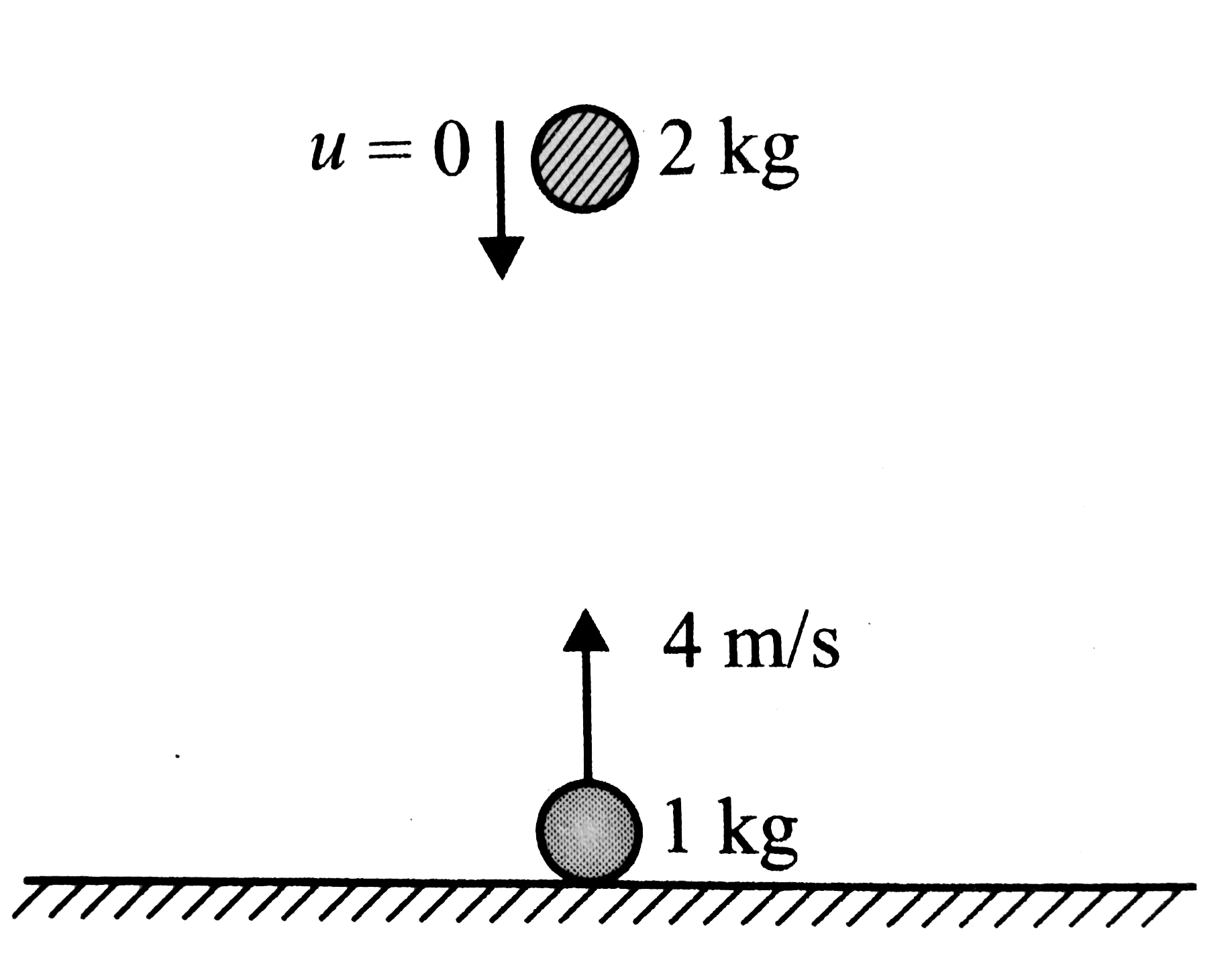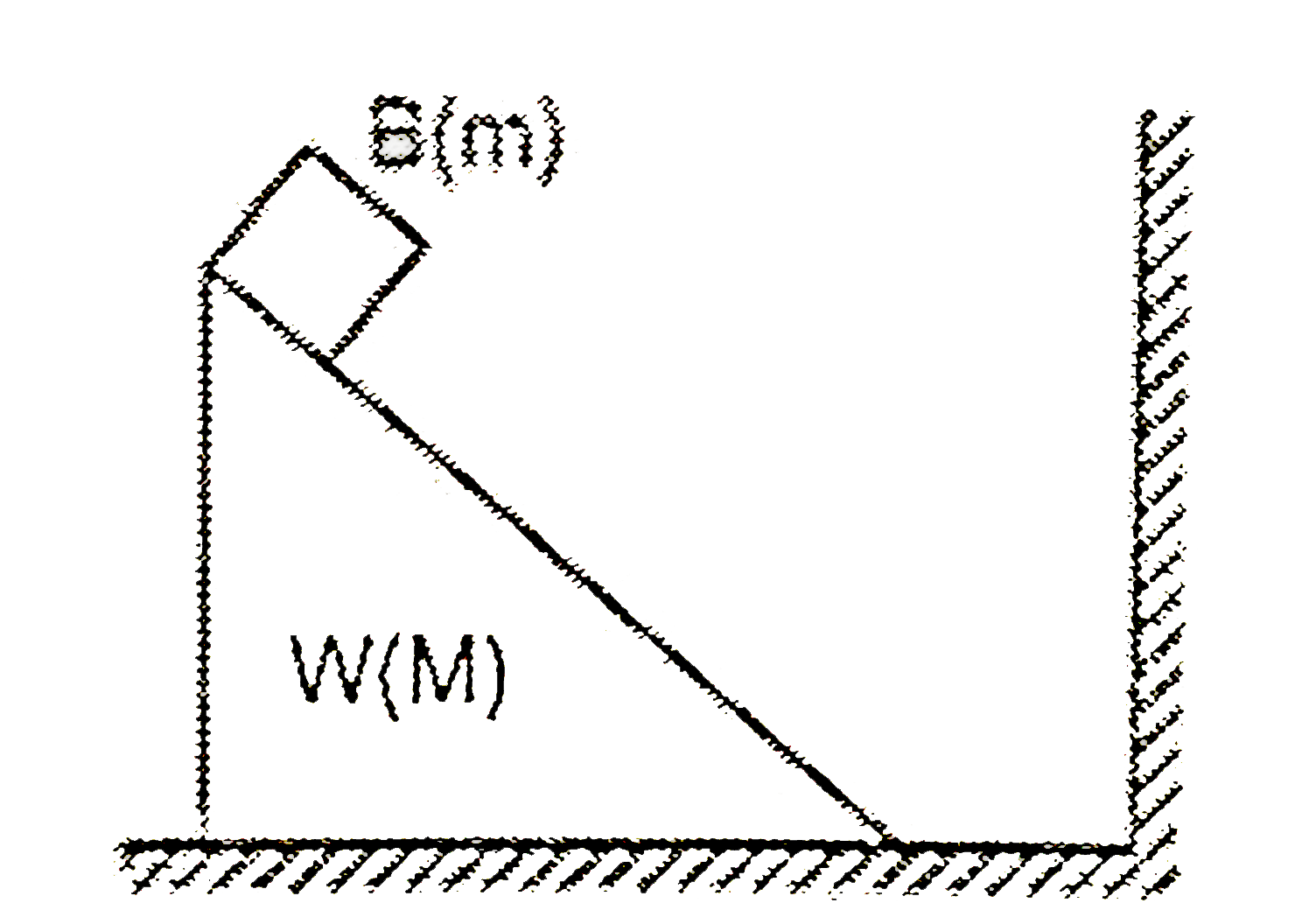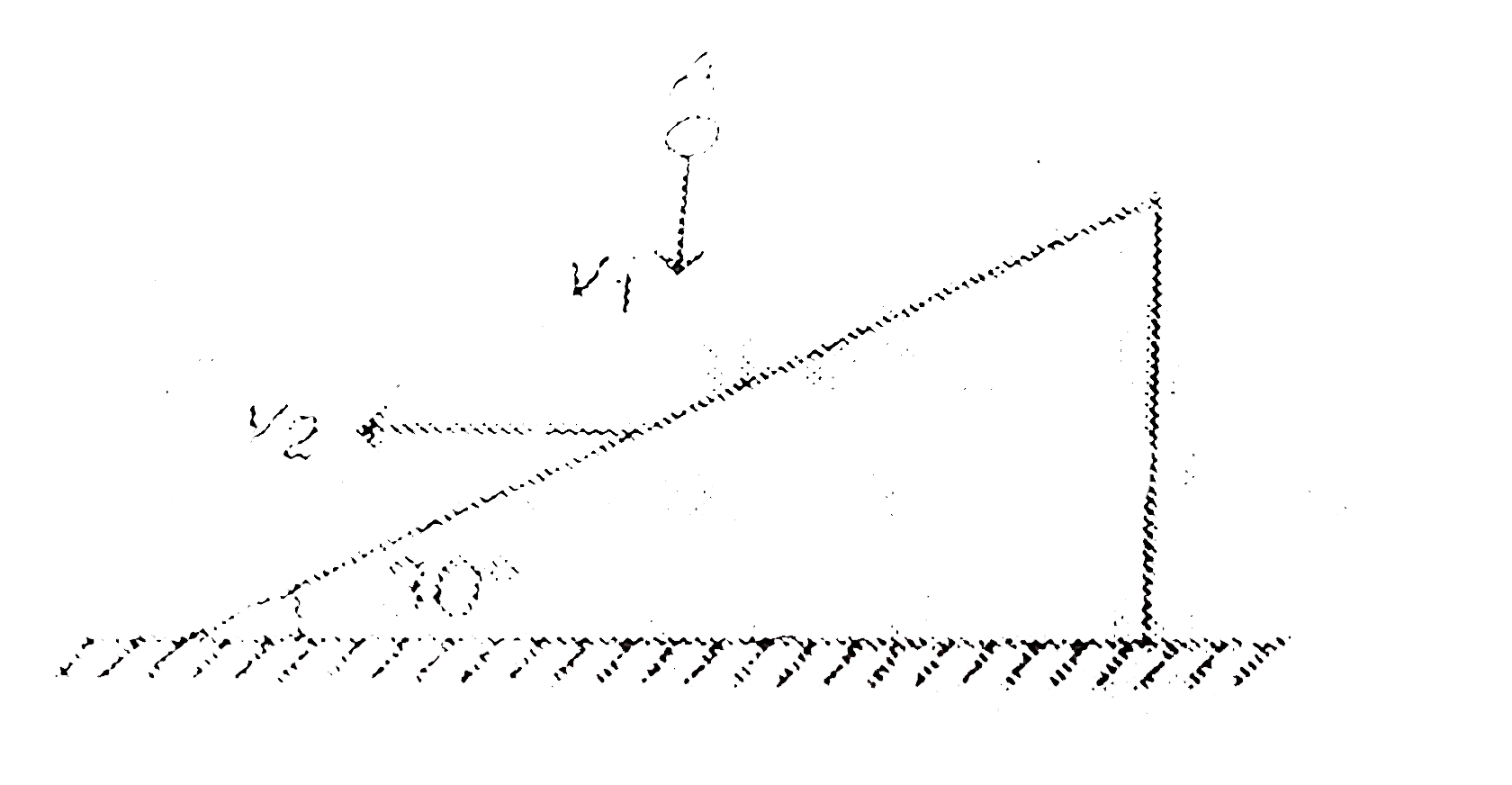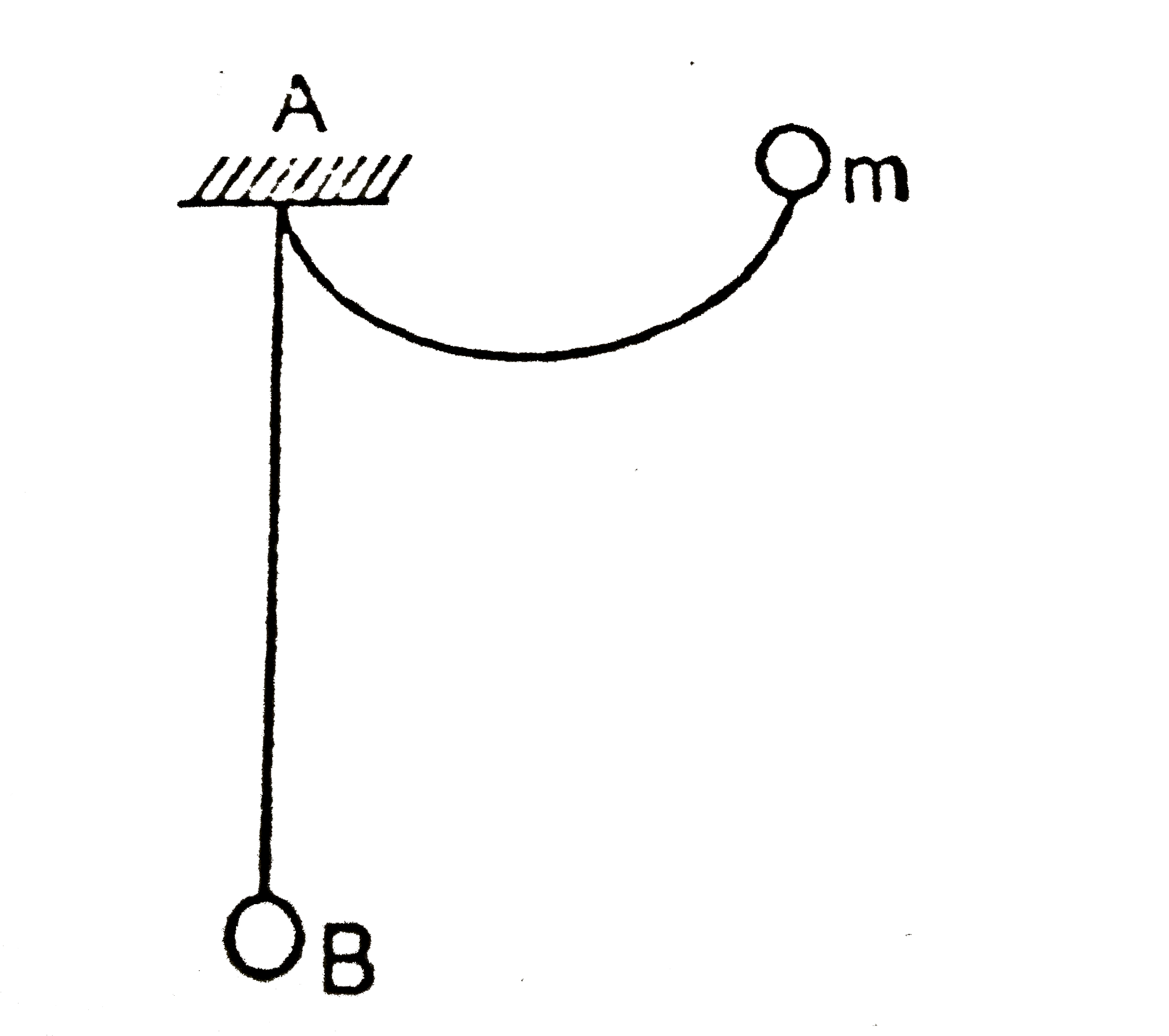Complete Solutions to L-2 of chapter IMPULSE AND MOMENTUM of Class 11 book with complete answers and questions
| Class 11 | PHYSICS |
| Chapter | IMPULSE AND MOMENTUM |
| ANURAG MISHRA | L-2 |
| Number Of Questions | 21 |
| Academic Year | 2023-24 |
A uniform chain of mass M and length L is held vertically in such a way that its lower end just touches the horizontal floor. The chain is released from rest in this position. Any portion that strikes the floor comes to rest. Assuming that the chain does not form a heap on the floor, calculate the force exerted by it on the floor when a length x has reached the floor.
View SolutionA ball strikes a wall with a velocity `vecu` at an angle `theta` with the normal to the wall surface. and rebounds from it at an angle `beta` with the surface. Then
View SolutionA ball hits the floor and rebounds after an inelastic collision. In this case
View SolutionTwo identical buggies move one after the other due to inertia (without friction) with the same velocity `v_0`. A man of mass m rides the rear buggy. At a certain moment the man jumps into the front buggy with a velocity u relative to his buggy. Knowing that the mass of each buggy is equal to M, find the velocities with which the buggies will move after that.
View SolutionA nonzero external force on a system of particles. The velocity and the acceleration of the cente of mass are found to be `v_0 and a_0` at an instant t. It is possible that
View SolutionA small particle travelling with a velocity v collides elastically with a spbereical body of equal masss and of radius r initially kept at rest. The centre of this spherical body is located a distnce `rho(ltr)` away from the direction of motion of the particle figure. Find the final velocities of the two particles.

View SolutionTwo particles A and B of equal size but of masses m kg and 2 m kg are moving directly towards each other with speeds 21 m/s and 4 m/s respectively. After collision, A moves with a speed of 1 m/s in the original direction. Then:
View SolutionTwo friends A and B (each weighing 40 kg) are sitting on a frictionless platform some distance d apart. A rolls a ball of mass 4 kg on the platform towards B which B catches. Then B rolls the ball towards A and A catches it. The ball keeps on moving back and forth between A and B. The ball has a fixed speed of 5 m/s on the platform. a. Find the speed of A after he rolls the ball for the first time. b. Find the speed of A after he catches the ball for the first time. c. Find the speed s of A and B after the ball has made 5 round trips and is held by A. d. How many times can A roll theball? e. where is the centre of mas the system A+B+ ball at the end of the nth trip?
View SolutionA ball of mass `1 kg` is thrown up with an initial speed of `4 m//s`. A second ball of mass `2 kg` is released from rest from some height as shown in Fig. Choose the correct statement (s).

View SolutionA cannon shell is fired to hit a target at a horizontal distance R. However, it breaks into two equal parts at its highest point. One part (A) returns to the cannon. The other part is:
View Solution
In the figure, the block B of mass m starts from rest at the top of a wedge W of mass M. All surfaces are without friction. W can slide on the ground. B slides down onto the ground, moves along it with a speed v, has an elastic collision with the wall, and climbs back two W.
View SolutionA strip of wood of mass M and length l is placed on a smooth" horizontal surface. An insect of mass m starts at one end of the strip and walks to the other end in time t,moving with a constant speed :
View SolutionA sphere `A` moving with speed `u` and rotating With angular velocity `omega` makes a head-on elastic collision with an identical stationary sphere `B`. There is no friction between the surfaces of `A` and `B`. Choose the conrrect alternative(s). Disregard gravity.
View SolutionIn an elastic collision between spheres A and B of equal mass but unequal radii, A moves along the x-axis and B is stationary before impact. Which of the following is possible after impact ?
View Solution
The ring R in the arrangement shown can slide along a smooth, fixed, horizontal rod XY. If is attached to the block B by a light sring. The blocks is released from rest, with the string horizontal.
View SolutionA ball A is falling vertically downwards with velocity `v_(1)` . It strikes elastically with a wedge moving horizontally with velocity `v_(2)` as shown in figure . What must be the ratio `(v_(1))/(v_(2))` , so that the ball bounces back in vertically upward direction relative to the wedge

View SolutionA ball of mass `m=200gm` is suspended from a point `A` by an inextensible string of length `L`. Ball is drawn to a side and held at same level as `A` but at a distance `(sqrt(3))/(2)L` from `A` as shown. Now the ball is released. Then `: (` assume string applies only that much jerk which is required so that velocity along string becomes zero `) `.

View SolutionA charged particle X moves directly towards another charged particle Y. For the X plus Y system, the ,total momentum is p and the· total energy is E. ,
View SolutionIn a one-dimensional collision between two particles, their relative velocity is `vecv_(1)` before the collision and `vecv_(2)` after the collision
View SolutionIn a one dimensional collision between two identical particles A and B, B is stationary and A has momentum p before impact. During impact, B gives impulse J to A.
View SolutionA block of mass m is connected to another .block of mass M by a massless spring of spring constant k. A constant force f starts action as shown in figure, then:

View Solution
L-2 questions and complete solutions for chapter IMPULSE AND MOMENTUM of SHREE BALAJI PHYSICS (HINGLISH) of Class 11